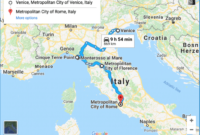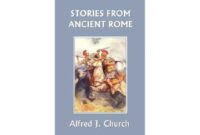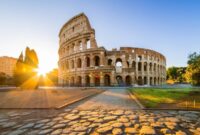Fun facts about Rome paint a captivating portrait of the Eternal City, revealing its rich history, architectural wonders, and cultural legacy. From the iconic Colosseum to the influential Roman Empire, Rome’s story is a tapestry of grandeur, innovation, and timeless appeal.
This exploration delves into the heart of ancient Rome, uncovering the secrets that have shaped its enduring fascination.
Historical Origins: Fun Facts About Rome
The origins of Rome are shrouded in myth and legend. According to tradition, the city was founded by Romulus and Remus, twin brothers who were raised by a she-wolf. The city’s official founding date is April 21, 753 BC.
Rome’s early history is characterized by a series of wars with neighboring tribes. The city gradually expanded its territory, and by the 1st century BC, it had become the dominant power in the Mediterranean region.
Key Figures in Roman History
- Romulus and Remus: The legendary founders of Rome.
- Julius Caesar: A brilliant military leader and politician who played a key role in the rise of the Roman Empire.
- Augustus: The first Roman emperor, who established the Pax Romana, a period of peace and prosperity.
- Constantine: The first Christian Roman emperor, who moved the capital of the empire to Constantinople.
The Rise and Fall of the Roman Empire
The Roman Empire reached its peak in the 2nd century AD. The empire covered a vast area, stretching from Britain to Egypt. However, the empire began to decline in the 3rd century AD, due to a combination of factors, including political instability, economic problems, and barbarian invasions.
The Roman Empire finally collapsed in the 5th century AD. The empire’s fall marked the end of the ancient world and the beginning of the Middle Ages.
Architectural Marvels
Ancient Rome was renowned for its architectural ingenuity, leaving behind iconic structures that continue to inspire awe and admiration. From the colossal amphitheater to the grand temple, these architectural wonders showcase the advanced techniques and materials used by the Romans.
The Colosseum
The Colosseum, an elliptical amphitheater, is the largest ever built in the Roman Empire. Constructed of concrete and stone, its massive structure could accommodate over 50,000 spectators who gathered to witness gladiatorial contests and other public spectacles.
The Pantheon
The Pantheon is a temple dedicated to all the gods. Its most striking feature is its massive dome, the largest unreinforced concrete dome in the world. The interior is a vast, circular space illuminated by an oculus at the top of the dome, creating a unique and awe-inspiring atmosphere.
The Roman Forum
The Roman Forum was the heart of ancient Rome, a bustling public square where political, commercial, and religious activities took place. Surrounded by temples, basilicas, and government buildings, the forum served as a center for both civic and religious life.
Cultural Heritage
Ancient Rome boasted remarkable cultural achievements that profoundly shaped Western civilization. Its contributions in art, literature, and philosophy left an enduring legacy.
Did you know that Rome is home to the world’s smallest country, Vatican City? It’s also the only city in the world with two sovereign states within its borders. To explore more fascinating landmarks and historical sites, check out our guide to rome tourist places . And here’s another fun fact: Rome is the birthplace of pizza, so be sure to indulge in a slice or two during your visit!
Roman art showcased exceptional technical skill and a distinct aesthetic. From lifelike sculptures to intricate mosaics, Roman artists captured the grandeur of the empire and the daily lives of its people. Notable sculptors included Praxiteles, known for his graceful “Venus de Milo,” and Michelangelo, whose “Pietà” remains an iconic masterpiece.
Literature, Fun facts about rome
Roman literature flourished, producing influential works in poetry, drama, and history. Poets like Virgil and Ovid celebrated the Roman Empire and its legendary heroes. Playwrights such as Plautus and Terence crafted witty comedies that explored human nature. Historians like Tacitus and Livy documented the empire’s rise and fall, providing valuable insights into ancient Rome.
Philosophy
Roman philosophy blended Greek influences with practical concerns. Stoicism, founded by Seneca and Epictetus, emphasized virtue, duty, and acceptance of fate. Epicureanism, advocated by Lucretius, promoted the pursuit of pleasure and the avoidance of pain. Cicero, a prominent orator and statesman, explored ethical and political issues in his philosophical writings.
The cultural heritage of ancient Rome continues to inspire and influence modern society. Its art, literature, and philosophy provide a testament to the ingenuity and creativity of the Roman people and have had a profound impact on the development of Western civilization.
Religious Beliefs and Practices
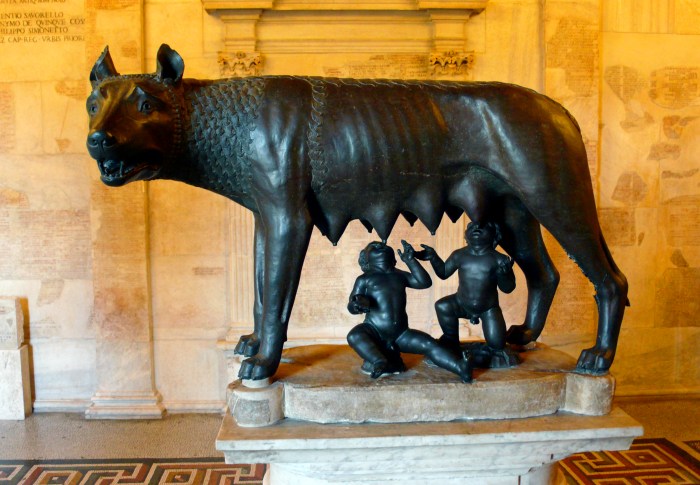
The ancient Romans held a complex and multifaceted system of religious beliefs and practices that played a central role in their society. Their religion was polytheistic, meaning they worshipped multiple deities, each with specific roles and responsibilities.The Romans believed that their gods controlled all aspects of life, from birth and death to war and peace.
They practiced a form of animism, believing that all things, both animate and inanimate, possessed a spirit or soul. This belief extended to natural phenomena such as rivers, mountains, and trees, which were often worshipped as deities.
Major Deities
The Roman pantheon included a vast array of gods and goddesses, each with their own unique attributes and spheres of influence. Some of the most important deities included:
-*Jupiter
The king of the gods, responsible for thunder, lightning, and the heavens.
-*Juno
Jupiter’s wife, the goddess of marriage and childbirth.
-*Mars
The god of war, agriculture, and virility.
-*Venus
The goddess of love, beauty, and fertility.
-*Minerva
The goddess of wisdom, war, and crafts.
-*Neptune
The god of the sea, earthquakes, and horses.
-*Pluto
Rome is home to a plethora of intriguing tidbits, from the Trevi Fountain’s coin-tossing tradition to the Pantheon’s oculus. But did you know that Italy as a whole is a treasure trove of captivating curiosities? From the leaning Tower of Pisa to the colorful canals of Venice, interesting things about Italy abound.
And let’s not forget the delicious cuisine, the vibrant art scene, and the passionate locals who make this country so captivating.
The god of the underworld and the dead.
Daily Life and Society
The daily lives of ordinary Romans were shaped by a complex social hierarchy, family structure, and economic activities. They enjoyed various forms of entertainment and leisure, reflecting the vibrant and multifaceted nature of Roman society.
Social Hierarchy
Roman society was highly stratified, with a rigid hierarchy based on wealth, birth, and citizenship. At the top were the patricians, wealthy landowners and descendants of the original Roman families. Below them were the plebeians, who included artisans, merchants, and farmers.
Slaves, captured in war or born into slavery, formed the lowest class.
Family Structure
The Roman family was patriarchal, with the father holding absolute authority. Extended families often lived together, and the household included not only blood relatives but also slaves and freedmen. Women had limited rights and were expected to be subservient to their husbands.
Economic Activities
Agriculture was the backbone of the Roman economy. Farmers cultivated wheat, olives, and grapes on small plots of land. Trade and commerce flourished, with goods imported from all corners of the empire. Craftsmen produced a wide range of products, from pottery to metalwork.
Entertainment and Leisure
Romans enjoyed a variety of entertainment options. Gladiatorial contests, chariot races, and theatrical performances were popular spectacles that drew large crowds. Public baths were social gathering places where Romans could relax and socialize.
Political System and Governance
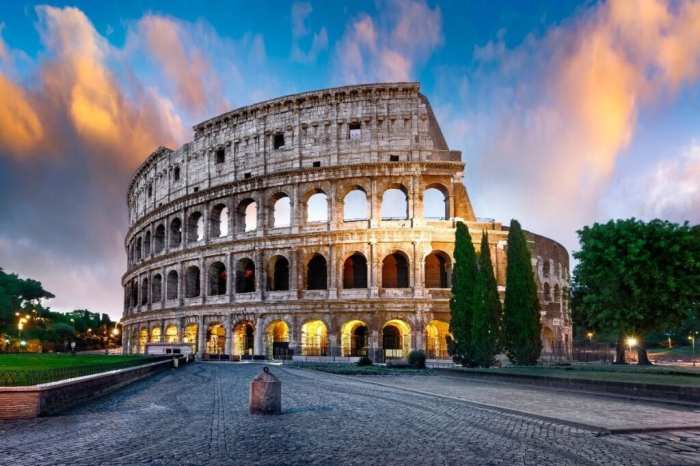
Ancient Rome’s political system underwent significant evolution over centuries. Initially a monarchy, it transitioned to a republic and eventually an empire. The Senate, consuls, and emperors played pivotal roles in governing the vast Roman Empire.
Senate
The Senate was a council of elder statesmen who advised the rulers and wielded considerable power. Its members were initially appointed by the king and later elected by the people. The Senate’s responsibilities included foreign policy, finance, and legislation.
Consuls
Two consuls were elected annually to lead the government. They shared equal power and commanded the army. Consuls were responsible for maintaining order, administering justice, and executing laws.
Emperors
During the Roman Empire, emperors held absolute power. They were both the supreme military commanders and chief magistrates. Emperors controlled the government, army, and religious affairs. Some emperors were wise and benevolent, while others were tyrannical and corrupt.
Roman Citizenship
Roman citizenship was a highly prized status that granted individuals certain rights and privileges. Citizens could vote, hold office, and own property. They also had access to public services and could benefit from Rome’s extensive infrastructure.
Challenges and Successes
The Roman political system faced numerous challenges, including corruption, political instability, and the vastness of the empire. However, it also achieved significant successes. The Romans developed a sophisticated system of law and administration that influenced subsequent civilizations.
Technological Advancements
The ancient Romans were renowned for their technological prowess, which played a crucial role in shaping their society and the world. From engineering marvels to military innovations, Roman technology left an enduring legacy.
Engineering and Infrastructure
The Romans were master engineers, constructing vast networks of roads, aqueducts, and bridges that connected their empire and facilitated trade and communication. Their roads, paved with stone and designed for durability, enabled rapid troop movement and the transportation of goods.
Aqueducts, such as the Aqua Claudia, brought fresh water from distant sources to major cities, improving sanitation and public health.
Military Technology
Roman military technology was equally impressive. The legionary, the backbone of the Roman army, was equipped with a range of weapons, including the iconic gladius (short sword) and pilum (heavy javelin). Roman engineers devised siege engines like the ballista and onager, capable of launching projectiles with devastating force.
Their warships, known as galleys, were equipped with bronze rams and multiple rows of oars, providing speed and maneuverability in naval warfare.
Impact on Roman Society and the World
Roman technology had a profound impact on their society and the world. The construction of roads and aqueducts fostered economic growth and improved living conditions. Military technology enabled Rome to conquer and maintain a vast empire, spreading Roman culture and technology throughout Europe and beyond.
Roman engineering techniques and innovations continue to influence modern infrastructure and construction practices, shaping the world we live in today.
Closing Notes
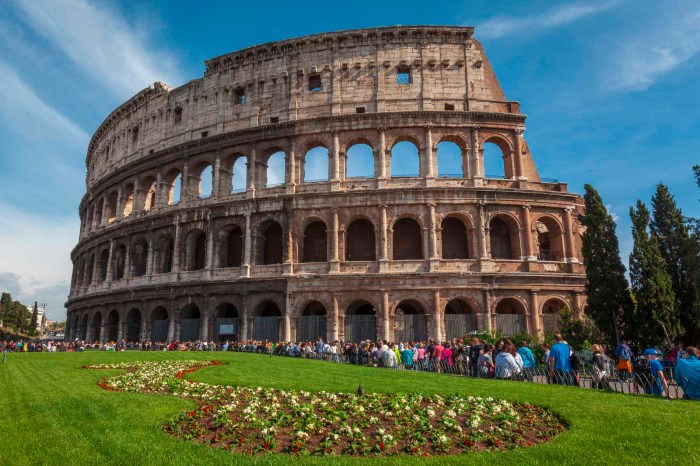
In conclusion, fun facts about Rome provide a captivating glimpse into the vibrant tapestry of the Eternal City. Its historical significance, architectural marvels, cultural achievements, and technological advancements continue to inspire and captivate, leaving an indelible mark on Western civilization and the world.
